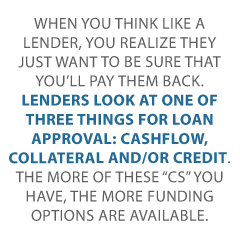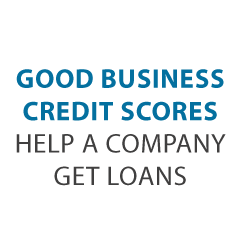
7 Marketing Lessons Learned from Billion Dollar Companies You’ve Never Heard Of
You’ve heard of Apple, Facebook, Microsoft, Google, and even Amazon. It doesn’t matter where you live in the world, the chances are you have heard of those companies.
But have you ever heard of Danaher, Fortive, AmerisourceBergen, Centene, or Archer Daniels Midland?
I bet you haven’t heard of any of those companies.
These companies aren’t small either. Here’s how much revenue each of them generates a year:
- Danaher – $29.45 billion
- Fortive – $5.25 billion
- AmerisourceBergen – $213 billion
- Centene – $118 billion
- Archer Daniels Midland – $85.25 billion
Now that’s a lot of revenue. These companies didn’t get to where they are by accident either. And although they might not be as “sexy” as Nike or Apple, they still generate a lot of cash.
We don’t work with all the brands that I mentioned above at my ad agency, but we do work with some of them as well as dozens of other billion-dollar companies you have never heard of.
And although our primary objective is to help our clients (which we do, hence we were awarded agency of the year and the 21st fastest growing company by Inc Magazine), we also learn a lot by consulting with over a hundred publicly traded companies.
Here are some of the marketing insights that you aren’t thinking about that billion-dollar companies leverage on a regular basis.
Lesson #1: The riches are not in the niches
Marketers always talk about finding a niche and how it is easier to market in a niche.
That is totally wrong. It’s not easier to market in a niche.
Think of it this way… what’s easier to do… rank number 1 for the term “credit cards” or “heatmap analytics tool”.
It of course is easier to rank for terms like “heatmap analytics tool”, which funny enough is what one of my former companies does.
But what happens if very few people ever search for terms like heatmap analytics? Sure you’ll get high rankings so you could claim it is easier to do marketing for that product, but if you barely get any traffic and sales from that term does it really matter?
See, rankings don’t mean much. All that really matters is are your marketing efforts paying off.
To keep it simple, are your marketing efforts driving you revenue profitably?
And although niche industries aren’t as competitive, it is harder to generate sales or even traffic. But if you go broad and you go after industries that are applicable to everyone, such as health insurance, it’s much easier to get traffic.
Sure you probably won’t get anywhere near the amount of traffic as the competition, but even if you get 1/100th of the traffic you can still build a big business.
That’s why I don’t go after niches. I go after massive TAMs (Total Addressable Market).
And yes health insurance isn’t sexy but United Health Care, a company most people don’t think about, generates $287 billion dollars a year in revenue.
The bigger the market, the more customers, and the easier it is to make some money. Now, it will be harder for you to win and be the top dog within that industry but hey you don’t have to win in order to generate enough income to be happy.
A prime example of this is one of my friends used to have a best man speech website where he sold speeches to people. He ranked at the top of Google, was the most popular site within the space and he couldn’t figure out how to generate more than $200,000 a year.
Good income nonetheless, but when he put the same effort into the education space, he was nowhere near the most popular site, heck people took him for granted… but he was generating millions a year in profit with the same effort.
As Rich Barton (founder of Expedia and Zillow) once said, it takes the same effort to swing a home run as it does to hit a single or a double. So might as well swing for the fences every time.
Lesson #2: Easier to market multiple products
Similar to lesson number 1, your market size keeps expanding as you continually introduce more products.
The familiar big brands that you know of have many products.
Amazon has ecommerce, streaming, cloud computing, grocery stores, etc.
Google has search, android, self-driving cars, Nest, etc
Apple has phones, laptops, iPads, computers, headphones, etc.
But it isn’t just the well-known brands that have multiple products.
Look at how many business units Danaher has. Same with Fortive, they have tons of business units.
I can’t think of one multi-billion dollar company that I know that doesn’t have multiple products or services.
And if you can think of one, I bet they will have multiple product offers, it is just a question of when. It’s how successful companies continually grow. You have no choice but to expand.
So if you want to grow your traffic or sales, think about what other products you can start offering that your current customers would want.
You can then cross-sell, which should help on the revenue end. But you can also expand your marketing. Just think about all the new paid media or SEO campaigns you can kick off the moment you have more products to sell.
It’s one of the simplest ways to scale your growth.
Lesson #3: The best marketing is word-of-mouth marketing
I first started out in marketing learning SEO and become good at it (or at least I think I am decent at it).
I then got into social media marketing with Digg, which doesn’t really exist in its old form, but it used to drive 20,000 plus visitors to your site in a day if you got on the homepage.
Then I started to learn conversion optimization, email marketing, paid ads, and pretty much all forms of online marketing.
I always thought that you build big business through marketing. And to do well with that you have to take an omnichannel approach.
And although it helps it’s not how you grow into a billion-dollar business.
Luckily from working with some of these unknown multi-billion dollar companies, I’ve gotten to know many CMOs as well as CEOs of some of these companies.
When I ask them what’s their number one marketing channel, do you know what they all tell me?
It’s word-of-mouth marketing or variations of it. In essence, other people telling others about your company, your product, your service… it is how you win.
So then I went on to ask these people, how do you generate more word-of-mouth marketing? When I took all of their responses and aggregated the data, here is what people said were the top 3 ways of getting more word of mouth:
- Be in business for a long time – no matter what you are selling and no matter how great it is, word-of-mouth marketing doesn’t happen overnight. People need to be patient and give it 10 plus years for it to fully kick in.
- Have an amazing product or service – if your product is great you will have more word-of-mouth marketing. And if it is terrible you will either have little to no word-of-mouth marketing or even worse, you will have it but it will be people talking negatively about you.
- Build a big organization – having thousands of people work for you is marketing. Whether it is people listing your company on their LinkedIn or your employees telling other people about your company, having a big labor force working for you is a great way to spread your brand out to the masses.
Lesson #4: Ugly is sexy
Do you need a new pair of shoes? It would be nice to have the latest Jordan shoes, but do you really need them?
Do you need the new iPhone? Again it would be nice to have it, but I bet your old iPhone lets you order food, send text messages, make calls or even check your emails well enough.
Maybe the camera isn’t as good as the new phones, but I bet you don’t use your phone for high-end photography and more so just use it to take selfies… so the new camera isn’t really needed.
But what about industries like payroll? Do you think a business can just stop using its payroll provider?
Well if they do stop, their employees won’t be paid and they won’t have a business.
That’s why companies like Ceridian are so popular. Again, you probably haven’t heard of them but they generate $1.02 billion a year.
Why?
Because they provide payroll services. Businesses can’t just stop using them unless they want to have their employee go unpaid and be pissed at them.
And even if you choose not to use Ceridian for payroll, the chances are whoever you use, pays them for their tax infrastructure as they are one of two companies who help calculate tax information for payroll in the United States.
And building a system that helps calculate payroll tax payments in the United States is complicated. If you get it wrong there are penalties, which is a big liability for any company.
When building that system, you have to think about each state within the United States as well as each county and city as they all have their own tax rules which also constantly change.
In other words, there is a lot of money in building ugly businesses that people need.
You don’t see kids growing up talking about building software to help with payroll taxes. Instead, they talk about creating a new fashion brand or getting paid to be an influencer.
Lesson #5: the United States is not the center of the world
I live in the United States and love this country.
Yes, it has issues, but all countries have problems…
But the United States is by no means the center of the world. The majority of the 7.7 billion people in this world don’t live in the United States. They actually live in other countries.
At my ad agency NP Digital we have people who work with us all over the world. And we have offices in places like India, Brazil, Canada, Australia… and the list goes on and on.
We don’t have these offices for outsourcing as many people would assume. We have these offices to help people out with their marketing within those regions.
For example, why would companies like Cisco want to market to people in India? It’s a booming market.
Even my CEO, he was the president of a division within a publicly traded company. That division had over 4000 employees. And can you guess what percentage of their revenue came from the United States?
Roughly 26%. That means roughly 3/4 of their revenue was coming from regions outside of the United States.
Going global makes it easier for you to get more traffic because there is a bigger pool of people for you to target and in many cases, it is less competitive.
That was one of the instrumental strategies for our fast growth at NP Digital, in which we expanded globally (and we are still adding more regions).
We did this using this strategy. As it helped us get leads and traffic from countries all around the world.
Lesson #6: Your marketing is only as good as your team
Years ago I created a startup called KISSmetrics that failed.
It was a web analytics company that raised $16.4 million from investors.
I had an investor who sat on our board named Phil Black from True Ventures. Overall awesome guy and I loved him as a board member.
I remember him continually giving one piece of advice…
As an entrepreneur you don’t have to figure everything out or do everything on your own, instead you need to hire amazing people. People who have done what you are looking to accomplish and have done it before in your exact industry.
In other words, Phil kept pushing us to hire amazing people for every role.
For example, if you are an ad agency and you need to do better with sales, hire the head of sales from one of your competitors who you know is crushing it. It may cost you a lot of money, but there is a higher chance that they will know exactly what you need to do in order to succeed.
Versus just hiring a head of sales from a random industry because they won’t know your industry and what they need to do in order to succeed.
I wish I understood the power of what Phil was trying to teach to me when we founded the company in 2008. Because if I truly understood it, I would be much further along in my career.
With NP Digital we took that advice to the extreme. Our CEO was the President of iProspect, the largest performance marketing agency (aka a competitor).
Our head of client services came from there as well.
Our COO was in charge of all performance marketing fulfillment at Dentsu, which meant she was in charge of over $1 billion in revenue.
My co-founder and I continually look for the best people. As that is the way to really grow fast.
That’s what large corporations do.
You need to also do that with your marketing. From the person running your marketing division to each individual player such as your SEO or paid media manager.
Do they have industry experience? If not, they may not perform that well.
Did they continually get promotions at their previous jobs? If they didn’t then they may not be as great as they claim to be. It doesn’t matter how good people claim to be, if they didn’t continually get promotions at their previous jobs it means that others didn’t find them as valuable as they claim to be.
These are 2 things to consider when hiring marketers or any role for that matter of the fact. Yes, you want people who are a cultural fit, but you also want people who worked for competitors and continually got promotions and raises in the past because it usually means they did a good job.
Lesson #7: You have to build a brand to do well in the long run
What do you think the most popular search term is on Google within the United States?
Common, take a guess…
It’s actually the term “Facebook”.
Guess what the second most popular search term is?
It’s the term “YouTube”.
The 3rd most popular search term is Amazon. The 5th is Google, 6th is Walmart, and the 7th is Gmail.
Notice a trend here?
The most popular search terms, not just in the United States, but globally tended to be brands.
Just look at the brand Nike. In the United States, it is searched 6 million times a month. And the term shoes is only searched 1.2 million times a month. In other words, Nike gets more searches for the brand each month than the whole category of shoes.
Now, what do you think my most popular search term is that drives traffic to my business?
It’s actually not Neil Patel, it’s Ubersuggest.
Our second most popular term is another brand that we own… Answer the Public.
And the third most popular search term for us is my personal brand, Neil Patel.
To build a big business you need to build a brand.
SEO will only get you so far. Paid ads will only get you so far. To win people must love your product or service if you expect your brand to be big and do well.
If you are struggling to build a brand keep in mind that it just takes time. Don’t expect the world of results in the first 3 years. You’ll have to give it 5 plus years for your brand to start taking off.
Here is an article that I wrote that can help you build a brand and here is a video that can also help you out.
Conclusion
Learning from brands like Apple is great. They are an amazing company. Heck, I’m writing this blog post on a Macbook.
But it’s hard for people to replicate the magic Apple has with their business and even marketing.
On the flip side, it’s much easier for you to replicate the marketing strategies that these unknown multi-billion companies are leveraging because they work for all business types and they aren’t tough strategies to implement.
So, what other strategies have you learned from companies that many of us aren’t familiar with?



